Introduction
This literature review explores the relationship between coal consumption, economic growth, urbanization, financial development, and carbon dioxide (CO2). The study will provide an overview of scholarly literature on the topic and will seek to identify the significant findings and conclusions drawn from the research. It will also discuss the study’s implications and suggest directions for future research.
To do so, the review will focus on four specific variables: coal consumption, financial development, economic growth, and urbanization, and their relationship to CO2 emissions distribution, as seen in Figure 1 below. This review will assess the current state of research, identify knowledge gaps, and suggest future research directions.
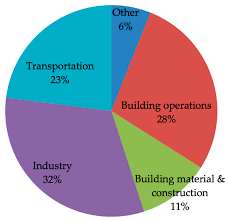
The Relationship Between Coal Consumption and CO2 Emissions
Coal combustion for energy production significantly contributes to world carbon dioxide emissions. Coal is a fossil fuel of organic materials underground for millions of years (Abbasi et al., 2021). The combustion of coal results in carbon dioxide emission into the atmosphere, which in turn contributes to the greenhouse effect and climate change.
The consumption of coal is connected to carbon dioxide emissions because burning more coal releases more CO2 into the atmosphere (Shi et al., 2018). In order to bring down the amount of carbon dioxide released into the atmosphere, governments and individuals alike need to cut back on their reliance on power provided by coal. This may be done by using renewable energy sources such as solar and wind power and energy efficiency initiatives such as reducing electricity usage and improving insulation. Figure 2 below illustrates the relationship between coal consumption and release of CO2.
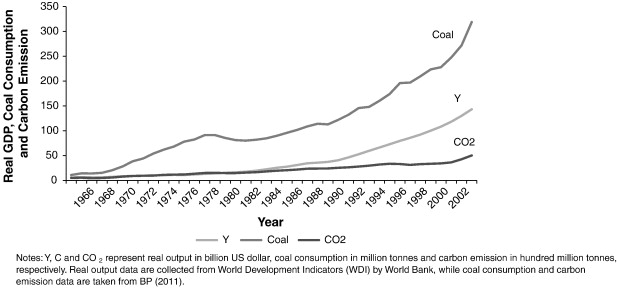
Studies
Many scholars have studied the connection between coal consumption and CO2 emissions. Danish et al. (2018) looked at the connection between coal usage and carbon dioxide emissions in China using the vector Error Correction Model (VECM) model to evaluate the long-run and short-run dynamics of the relationship. The study’s findings revealed a positive and strong long-run link between coal usage and carbon dioxide emissions (Liu et al., 2023). The findings also demonstrated that coal usage has a more considerable short-term influence on carbon dioxide emissions than it does in the long run. According to the report, lowering coal use is an effective way to reduce carbon dioxide emissions.
Additionally, Raihan employed a linear regression model to analyze the correlation between coal consumption and CO2 emissions in Nepal. The study’s results demonstrated that coal usage significantly affected CO2 emissions, meaning that higher coal consumption led to increased emissions (Raihan & Tuspekova, 2022). Additionally, the study found that rising coal prices had a notable adverse effect on CO2 emissions. It suggested that policies restricting coal use and increasing coal prices could effectively reduce CO2 emissions in Nepal.
Furthermore, Hatmanu investigated the association between coal use and CO2 emissions in Thailand using a logistic regression model. The study’s results indicated that coal consumption had a markedly positive impact on CO2 emissions (Hatmanu et al., 2021). Furthermore, the study observed that higher coal prices significantly reduced CO2 emissions. The findings suggested that implementing strategies to limit coal consumption and elevate coal prices could aid in lowering CO2 emissions in India.
Moreover, Chandio links coal use and CO2 emissions in Pakistan using the VECM. According to the study’s findings, there is a substantial long-run association between coal usage and CO2 emissions in Pakistan (Chandio et al., 2020). The findings also revealed that coal consumption had a significant favorable influence on CO2 emissions, implying that increasing coal consumption resulted in an increase in CO2 emissions. According to the study, reducing coal usage might efficiently reduce CO2 emissions in Pakistan.
Lastly, Moore used a logistic regression model to investigate the relationship between coal use and CO2 emissions in Brazil. The research’s findings revealed that coal usage had a considerable beneficial impact on CO2 emissions in Brazil (Moore et al., 2022). The study also found that increased coal usage resulted in increased CO2 emissions. The findings also revealed that a rise in coal prices has a considerable negative impact on CO2 emissions. The study indicated that measures focused on reducing coal consumption and raising coal prices might effectively lower CO2 emissions in Brazil.
Findings
The results of the research and activities discussed previously imply a significant link between the utilization of coal and the production of carbon dioxide. The burning of coal results in the most significant quantity of carbon dioxide being emitted into the atmosphere (Bosah et al., 2021). As a result, lowering one’s usage of coal is an efficient approach to cutting down on one’s contribution to climate change caused by carbon dioxide emissions (Sifat & Haseli, 2019). In order to achieve this goal, individuals and governments alike need to transition to using renewable forms of energy, boost their energy efficiency, and price carbon emissions.
The Relationship Between Economic Growth and CO2 Emissions
Economic development and CO2 emissions have a complicated connection, frequently fueling the latter. Development of the economy raises the demand for energy derived from fossil fuels, which in turn leads to an increase in CO2 emissions, as seen in the graph in Figure 3. Anwar et al. (2021) found that economic expansion may be a driving force behind the creation of new technology and policies that limit emissions. A growing economy may result in more investment in low-carbon technologies, such as renewable energy sources, energy efficiency measures, and other low-carbon technologies (Jian et al., 2019).
Increased economic activity may inspire businesses to innovate and create new technologies to reduce emissions. These efforts typically involve using financial mechanisms such as taxes and subsidies. Therefore, economic expansion and increased CO2 emissions are inexorably linked to one another (Wasti & Zaidi, 2020). For the transition to a low-carbon economy to be successful, the economy would need to grow, and new technologies and policies that reduce emissions would also need to be developed.
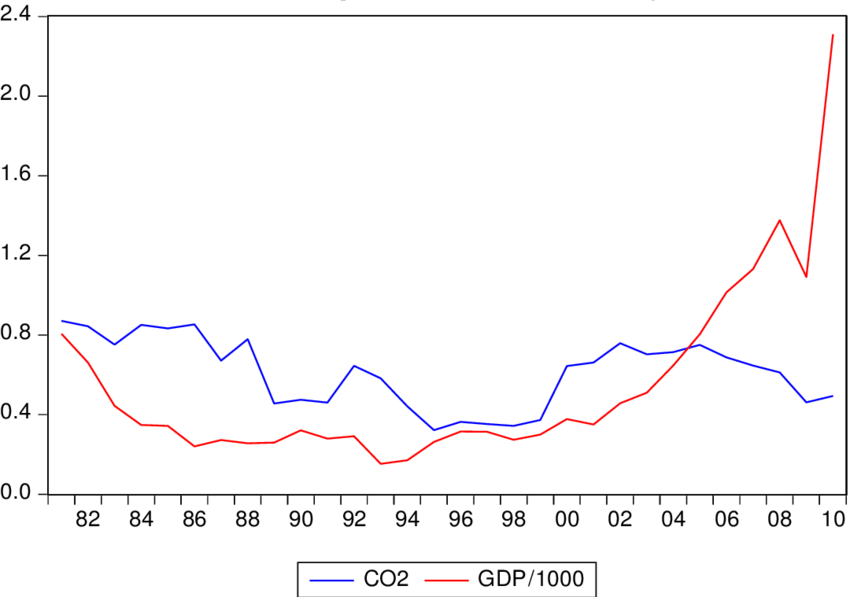
Studies
Economic growth in relation to CO2 is a vital topic that needs thorough investigation. Zou (2018) researched the long-term relationship between economic growth and CO2 emissions in global panel countries using the VECM model. According to the findings of the study, economic expansion has a considerable and advantageous influence on CO2 emissions throughout a nation’s lifetime. According to the findings of the study, the impacts of economic expansion on CO2 emissions were most pronounced in emerging nations as well as in countries with high levels of energy intensity (Usman et al., 2021). The authors arrived at the conclusion that careful management of economic development was necessary in order to bring down global CO2 emissions.
Furthermore, Sufyanullah conducted a project on the relationship between economic growth and CO2 emissions using the ARDL model. The findings of the study indicated that economic expansion had a considerable and beneficial influence on CO2 emissions during the course of the study’s time period (Sufyanullah et al., 2022). The authors came to the conclusion that economic expansion should be carefully regulated in order to cut down on global CO2 emissions and that this should be followed by the implementation of policies that are targeted at cutting down on carbon emissions.
Lastly, the environmental Kuznets curve (EKC) model can be used to investigate the link between economic growth and CO2 emissions. According to this model, emissions rise with economic expansion until a certain point, after which they fall while the economy continues to grow (Hasan and Du, 2023). According to this concept, when countries expand, technical breakthroughs and improved economic policies are implemented, which aids in the reduction of emissions. This shows that, if handled properly, economic expansion might be essential in decreasing emissions (Qayyum et al., 2021). As a result, the EKC model demonstrates that economic development may be leveraged to cut emissions if the appropriate regulations are in place.
Findings
These three researchers all come to the same conclusion that economic development is the principal cause of CO2 emissions. The importance of this finding lies in the fact that it places an emphasis on decoupling economic development from emissions in order to achieve global carbon reduction targets (Wei et al., 2021). In addition, the studies highlight the relevance of energy efficiency and the utilization of renewable energy sources in the process of reducing emissions. In conclusion, the findings demonstrate that governments’ economic and energy policies must be coordinated to guarantee that economic growth is consistent with reductions in carbon emissions.
The Relationship Between Urbanization and CO2 Emissions
Urbanization contributes significantly to climate change by increasing CO2 emissions. Urban regions account for over 70% of worldwide energy-related carbon dioxide emissions and a sizable portion of global greenhouse gas emissions (Wang, 2022). The increased use of energy-intensive systems in urban areas, such as those for heating, cooling, and transportation, contributes to an increase in both the consumption of energy and the production of carbon dioxide as a result of a city’s growing population and size (Mehmood, 2020).
In addition, urbanization can lead to the clearance of forest land to make way for the expansion of cities, which results in the release of significant quantities of carbon dioxide into the atmosphere. Cities have a responsibility to reduce emissions to the greatest extent possible by putting more emphasis on energy efficiency, renewable energy, and green building design. Figure 4 below indicates the relationship between CO2 and its environment.
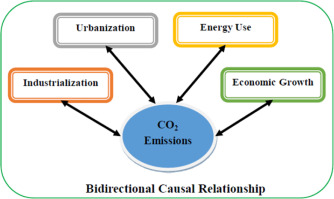
Studies
Vector Error Correction (VECM) model can be used to evaluate the link between urbanization and CO2 emissions in China. According to Khan et al. (2019), from the use of the model, they concluded that urbanization has a considerable impact on CO2 emissions and that this impact is more substantial in the short term than in the long term. This conclusion was reached due to the researchers’ findings (Orhan et al., 2021). In addition, it was discovered that the effect of urbanization on CO2 emissions was noticeably more prominent in the eastern and central parts of China compared to the western portion of the country.
Another research study intended to examine the relationship between urbanization and CO2 emissions in Algeria was conducted. This research by Raggad (2018) used the ARDL model to examine the link between the two. The outcomes of their research indicate that urbanization has a positive and considerable short- and long-term influence on CO2 emissions (Hashmi & Alam, 2019). This effect may be seen both immediately and in the long term. In addition to this, research has revealed that the beneficial effect that urbanization has on CO2 emissions in the near term is significantly larger than the favorable effect that it has on CO2 emissions in the long term.
Finally, Chen found the association between urbanization and CO2 emissions in India and Pakistan using a Causal Model. The researchers discovered that, in both nations, urbanization had a favorable and considerable influence on CO2 emissions, with the impacts being more prominent in India (Chen et al., 2022). They determined that the expansion of cities and the rise in urban settlements were the key causes of rising CO2 emissions in both nations. This impact was shown to be considerably stronger in India due to its faster rates of urbanization and industrialization (Piłatowska et al., 2020). The study also found that urban growth, such as road construction, transit, and building, had a considerable impact on CO2 emissions in both nations.
Findings
According to the findings of the study, urbanization has a considerable influence on CO2 emissions, and this influence is significantly higher in the short term than it is in the long term. In addition, studies have shown that urbanization has a beneficial effect on CO2 emissions both in the short term and in the long term (Lamb et al., 2021). The beneficial influence of urbanization on CO2 emissions in the short term is significantly greater than the long-term advantage of urbanization on CO2 emissions. Last but not least, the strongest correlation between urbanization and emissions may be found in cities with a high population density (McKenzie, 2021). This means that efforts to reduce CO2 emissions worldwide should concentrate on improving urban planning and public transportation systems in places with a high population density.
The Relationship Between Financial Development and CO2 Emissions
The connection between economic development and CO2 emissions is complicated. The relationship between financial products and enhanced economic growth has been established, which can lead to increased emissions (Aziz & Mighri, 2022). The accumulation of money may enable access to renewable energy sources such as solar, wind, and hydropower, which in turn can reduce emissions as seen in Figure 5. In addition, higher financial development can incentivize firms to invest in energy efficiency and pollution reduction technologies and enhance public awareness of environmental concerns (Mighri et al., 2022). Lastly, the way in which money is spent, and the rules that are in place to encourage environmentally beneficial investments are the factors that define the link between increased economic growth and increased CO2 emissions.
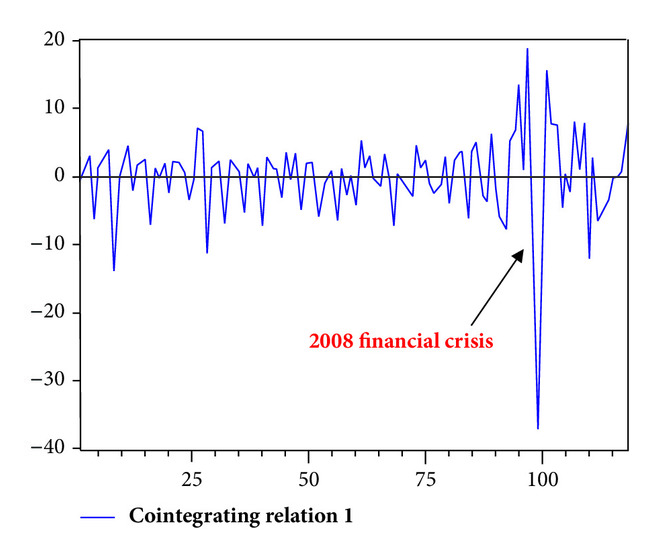
Related Studies
Jian used a VECM in research on the long-run and short-run connections between financial development and CO2 emissions in 18 countries. The results of the research demonstrated that there is a connection between Gross Domestic Product growth and CO2 emissions; however, this connection is detrimental over the course of time (Jian et al., 2019). According to the results of the study, there is a potential that, over time, increased financial development will lead to a reduction in carbon dioxide emissions. This was suggested by the fact that there is a possibility.
Akalpler and Hove utilized an ARDL model to investigate the correlation between a country’s level of economic growth and the amount of carbon dioxide emissions in 28 different nations. The research results suggested that there is a positive correlation between economic growth and CO2 emissions over a longer period of time (Akalpler and Hove, 2019). This research indicated that increasing economic growth may lead to larger CO2 emissions over time.
Furthermore, Wang and Zhang investigated the link between financial development and CO2 emissions in Vietnam using a linear regression model. According to the study’s findings, there is a positive relationship between financial development and CO2 emissions, indicating that rising financial development might contribute to augmented CO2 emissions (Wang, L. (2022). Additionally, the study discovered that the expansion of financial development in China accounts for more than half of the entire increase in CO2 emissions. Our findings imply that financial development has a noticeable influence on CO2 emissions and that steps should be taken to mitigate the environmental implications of financial growth.
Lastly, Xie examined the influence of financial development on CO2 emissions in China using a panel vector autoregression (VAR) model. The study’s findings indicate a positive association between financial development and CO2 emissions, suggesting that growing financial development might contribute to increased CO2 emissions (Xie et al., 2019). The study also discovered that the short-term impact of financial development on CO2 emissions is more serious than the long-term impact (Ali et al., 2020). This is most likely because short-term economic growth is frequently driven by the expansion of the financial sector, and the consequences of financial development can linger for a longer time.
Findings
The research outcomes demonstrate that financial development may have beneficial and harmful implications on CO2 emissions. An increase in investment in industries that require a lot of energy might result in an increase in emissions in the short run (Mohsin et al., 2022). Over a more extended period, emissions can be reduced by increased investment in energy-saving technology and renewable forms of energy (Kim & Kim, 2022). In addition, investments in renewable energy sources and technology that are efficient with energy can mitigate the harmful effects of making more substantial investments in energy-heavy enterprises.
Reference List
Abbasi, K.R. et al. (2021) ‘How energy consumption, industrial growth, urbanization, and CO2 emissions affect economic growth in Pakistan? A novel dynamic ARDL simulations approach’, Energy, 221. Web.
Akadiri, S.S. et al. (2018) ‘Examining the causal impacts of tourism, globalization, economic growth and carbon emissions in Tourism Island Territories: Bootstrap panel granger causality analysis,” Current Issues in Tourism, 23(4), pp. 470–484. Web.
Akalpler, E. and Hove, S. (2019) ‘Carbon Emissions, energy use, real GDP per capita and trade matrix in the Indian economy-an ARDL approach’, Energy, 168, pp. 1081–1093. Web.
Ali, M.U. et al. (2020) ‘Fossil energy consumption, economic development, inward FDI impact on co 2 emissions in Pakistan: Testing EKC hypothesis through ARDL model’, International Journal of Finance & Economics, 26(3), pp. 3210–3221. Web.
Anwar, A. et al. (2021) “The asymmetric effect of public private partnership investment on transport CO2 Emission in China: Evidence from quantile ARDL approach,” Journal of Cleaner Production, 288, p. 125282. Web.
Aziz, G. and Mighri, Z. (2022) ‘Carbon Dioxide Emissions and forestry in China: A Spatial Panel Data Approach’, Sustainability, 14(19), p. 12862. Web.
Bosah, C.P. et al. (2021) ‘Dynamic nexus between energy consumption, economic growth, and urbanization with carbon emission: Evidence from panel PMG-ARDL estimation’, Environmental Science and Pollution Research, 28(43), pp. 61201–61212. Web.
Chandio, A.A. et al. (2020) ‘Investigating the long-run interaction between electricity consumption, foreign investment, and economic progress in Pakistan: Evidence from VECM approach’, Environmental Science and Pollution Research, 27(20), pp. 25664–25674. Web.
Chen, H. et al. (2022) ‘Does energy consumption, economic growth, urbanization, and population growth influence carbon emissions in the BRICS? evidence from panel models robust to cross-sectional dependence and slope heterogeneity’, Environmental Science and Pollution Research, 29(25), pp. 37598–37616. Web.
Danish, Wang, B. and Wang, Z. (2018) ‘Imported technology and CO2 emission in China: Collecting evidence through bound testing and VECM approach’, Renewable and Sustainable Energy Reviews, 82(3), pp. 4204–4214. Web.
Hasan, M.M. and Du, F. (2023) ‘Nexus between green financial development, green technological innovation and environmental regulation in China’, Renewable Energy, 204, pp. 218–228. Web.
Hashmi, R. and Alam, K. (2019) “Dynamic relationship among Environmental Regulation, innovation, CO2 emissions, population, and economic growth in OECD countries: A panel investigation,” Journal of Cleaner Production, 231, pp. 1100–1109. Web.
Hatmanu, M., Cautisanu, C. and Iacobuta, A.O. (2021) ‘On the relationships between CO2 emissions and their determinants in Romania and Bulgaria. An ARDL approach,” Applied Economics, 54(22), pp. 2582–2595. Web.
Jian, J. et al. (2019) ‘The effects of energy consumption, economic growth and financial development on CO2 emissions in China: A VECM approach’, Sustainability, 11(18), p. 4850. Web.
Khan, M.K., Teng, J.-Z. And Khan, M.I. (2019) Effect of energy consumption and economic growth on carbon dioxide emissions in Pakistan with dynamic ARDL simulations approach – environmental science and Pollution Research, Springer Link. Springer Berlin Heidelberg. Web.
Kim, D. and Kim, S. (2022) ‘Role and challenge of Technology Toward a smart sustainable city: Topic modeling, classification, and time series analysis using information and Communication Technology Patent Data’, Sustainable Cities and Society, 82, p. 103. Web.
Lamb, W.F. et al. (2021) ‘A review of trends and drivers of greenhouse gas emissions by sector from 1990 to 2018’, Environmental Research Letters, 16(7), pp. 80–86. Web.
Liu, H. et al. (2023) ‘Linkage among urbanization, energy consumption, economic growth and carbon emissions. Panel data analysis for China using ARDL model’, Fuel, 332, p. 126122. Web.
McKenzie, M. (2021) ‘Climate change education and communication in global review: Tracking progress through national submissions to the UNFCCC secretariat’, Environmental Education Research, 27(5), pp. 630–635. Web.
Mehmood, U. (2020) Globalization-driven CO2 emissions in Singapore: An application of ARDL approach – environmental science and Pollution Research, SpringerLink. Springer Berlin Heidelberg. Web.
Mighri, Z., Sarwar, S. and Sarkodie, S.A. (2022) ‘Impact of urbanization and expansion of forest investment to mitigate CO2 emissions in China’, Weather, Climate, and Society, 14(3), pp. 68–69. Web.
Mohsin, M. et al. (2022) ‘The role of technological progress and renewable energy deployment in Green Economic Growth’, Renewable Energy, 190, pp. 77–78. Web.
Moore, C.C., Antunes, C.H. and Kulay, L. (2022) ‘Economic, environmental and energy analysis of carbon capture systems coupled in coal power plants for the reduction of CO2 emissions in Brazil’, International Journal of Greenhouse Gas Control, 114, p. 103606. Web.
Orhan, A. et al. (2021) ‘investigating the linkage between economic growth and environmental sustainability in India: Do agriculture and trade openness matter?’ Sustainability, 13(9), p. 4753. Web.
Piłatowska, M., Geise, A. and Włodarczyk, A. (2020) ‘The effect of renewable and nuclear energy consumption on decoupling economic growth from CO2 emissions in Spain’, Energies, 13(9), p. 21. Web.
Qayyum, M. et al. (2021) ‘Nexus between financial development, renewable energy consumption, technological innovations and CO2 emissions: The case of India’, Energies, 14(15), p. 4505. Web.
Raggad, B. (2018) Carbon dioxide emissions, economic growth, energy use, and urbanization in Saudi Arabia: Evidence from the ARDL approach and impulse saturation break tests – environmental science and Pollution Research, SpringerLink. Springer Berlin Heidelberg. Web.
Raihan, A. and Tuspekova, A. (2022) ‘Nexus between economic growth, energy use, agricultural productivity, and carbon dioxide emissions: New evidence from Nepal’ Energy Nexus, 7, p. 100113. Web.
Sifat, N.S. and Haseli, Y. (2019) ‘A critical review of CO2 capture technologies and prospects for Clean Power Generation’, Energies, 12(21), pp. 40–45. Web.
Sikder, M. et al. (2022) ‘The integrated impact of GDP growth, industrialization, energy use, and urbanization on CO2 emissions in developing countries: Evidence from the panel ARDL approach’, Science of The Total Environment, 837, p. 155795. Web.
Sufyanullah, K., Ahmad, K.A. and Sufyan Ali, M.A. (2022) ‘Does emission of carbon dioxide is impacted by urbanization? An empirical study of urbanization, energy consumption, economic growth and carbon emissions – using ARDL bound testing approach’, Energy Policy, 164, pp. 118–120. Web.
Usman, A. et al. (2021) ‘The effect of ICT on energy consumption and economic growth in South Asian economies: An empirical analysis’, Telematics and Informatics, 58, p. 101537. Web.
Wang, L. (2022) ‘Research on the dynamic relationship between China’s renewable energy consumption and carbon emissions based on ARDL model’, Resources Policy, 77, pp. 102–106. Web.
Wasti, S.K. and Zaidi, S.W. (2020) ‘an empirical investigation between CO2 emission, energy consumption, trade liberalization and economic growth: A case of Kuwait’, Journal of Building Engineering, 28, p. 10. Web.
Wei, T., Wu, J. and Chen, S. (2021) ‘Keeping track of greenhouse gas emission reduction progress and targets in 167 cities worldwide’, Frontiers in Sustainable Cities, 3(2), pp. 5–6. Web.
Xie, P., Gao, S. and Sun, F. (2019) ‘An analysis of the decoupling relationship between CO2 Emission in power industry and GDP in China based on LMDI method’, Journal of Cleaner Production, 21, pp. 598–606. Web.
Zou, X. (2018) ‘VECM model analysis of carbon emissions, GDP, and international crude oil prices’, Discrete Dynamics in Nature and Society, pp. 1–11. Web.